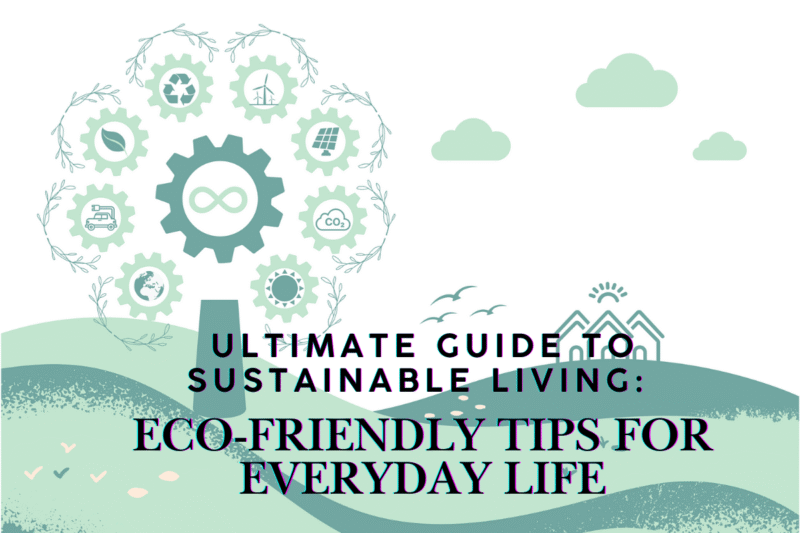Thinking about sustainable living can feel overwhelming. We often hear big, scary statistics about the environment. As a result, it is easy to feel like our small, individual actions do not make a difference. However, that could not be further from the truth. In fact, sustainable living is not about being perfect. It is about making small, thoughtful choices every day. This guide, therefore, will show you simple, practical ways to make a positive impact, one easy step at a time.
In Your Kitchen: A Focus on Sustainable Living
The kitchen is often the heart of the home. It is also a place where we can make some of the biggest sustainability gains. By focusing on what we eat and what we waste, we can greatly reduce our environmental footprint.
Firstly, let’s talk about food waste. A huge amount of the food we produce is never eaten. A simple way to combat this is through meal planning. Before you go shopping, plan your meals for the week. This ensures you only buy what you need. Secondly, get creative with leftovers and food scraps. For example, vegetable peels can be used to make a flavorful broth. In addition, you can try to buy “ugly” produce, which is often just as delicious but gets thrown away for cosmetic reasons. Another key part of sustainable living in the kitchen is reducing plastic. For instance, always bring reusable bags to the grocery store. You can also use glass jars or reusable containers for storage instead of plastic wrap.
Around the Home: Saving Energy and Water
Our homes use a lot of resources. Thankfully, there are many simple ways to cut back on energy and water consumption. For example, make it a habit to turn off lights when you leave a room. You can also switch to energy-efficient LED light bulbs, which use far less electricity. Another easy win is to unplug electronics when you are not using them. Many devices use “phantom power” even when they are turned off. Similarly, saving water is a vital part of sustainable living. Try taking shorter showers and always fix leaky faucets promptly. A small drip can waste a surprising amount of water over time.
Your Shopping Habits: A Path to Sustainable Living
Conscious consumerism is a core principle of sustainable living. It means thinking carefully about what we buy and why. The most sustainable product is often the one you do not buy at all. Before making a purchase, ask yourself if you truly need it. When you do need to buy something, choose quality over quantity. Well-made items last longer and create less waste. Furthermore, embrace the world of secondhand shopping. Thrift stores and online marketplaces are full of amazing finds, from clothing to furniture. This not only saves you money but also gives a second life to existing items. When buying new, try to support brands that are transparent about their environmental and ethical practices, often leveraging innovations in sustainable tech.
On the Go: Eco-Friendly Transportation
How we get around has a major impact on the planet. If you can, choose to walk, bike, or use public transportation instead of driving. These options are better for the environment and for your health. If you need a car, try to combine errands into a single trip to reduce your mileage. For longer journeys, consider train travel, which is often more eco-friendly than flying. Adopting these habits is a significant step towards a more sustainable lifestyle.
Beyond the Basics of Sustainable Living
Once you have mastered the basics, there are even more ways to deepen your commitment to sustainable living. Composting, for example, is a fantastic way to keep food scraps out of landfills. Instead, they become nutrient-rich soil for your garden. The EPA has great resources for getting started. You can also try making your own simple, non-toxic cleaning supplies with ingredients like vinegar and baking soda. Finally, look for ways to get involved in your local community. Joining a community garden or a local clean-up group can be a rewarding experience.

Conclusion: Small Changes, Big Impact
In conclusion, sustainable living is a journey, not a destination. It is about making progress, not achieving perfection. Every small change you make, from bringing a reusable bag to turning off a light, adds up to a significant positive impact. By adopting these simple, everyday habits, you are not just helping the planet; you are also becoming part of a global movement towards a healthier, more sustainable future for everyone.
Start Your Sustainable Living Journey Today!
Ready to make a change? Commit to trying one new tip from this guide this week. Download our free “Weekly Sustainable Habit Tracker” to help you stay on track and celebrate your progress!







